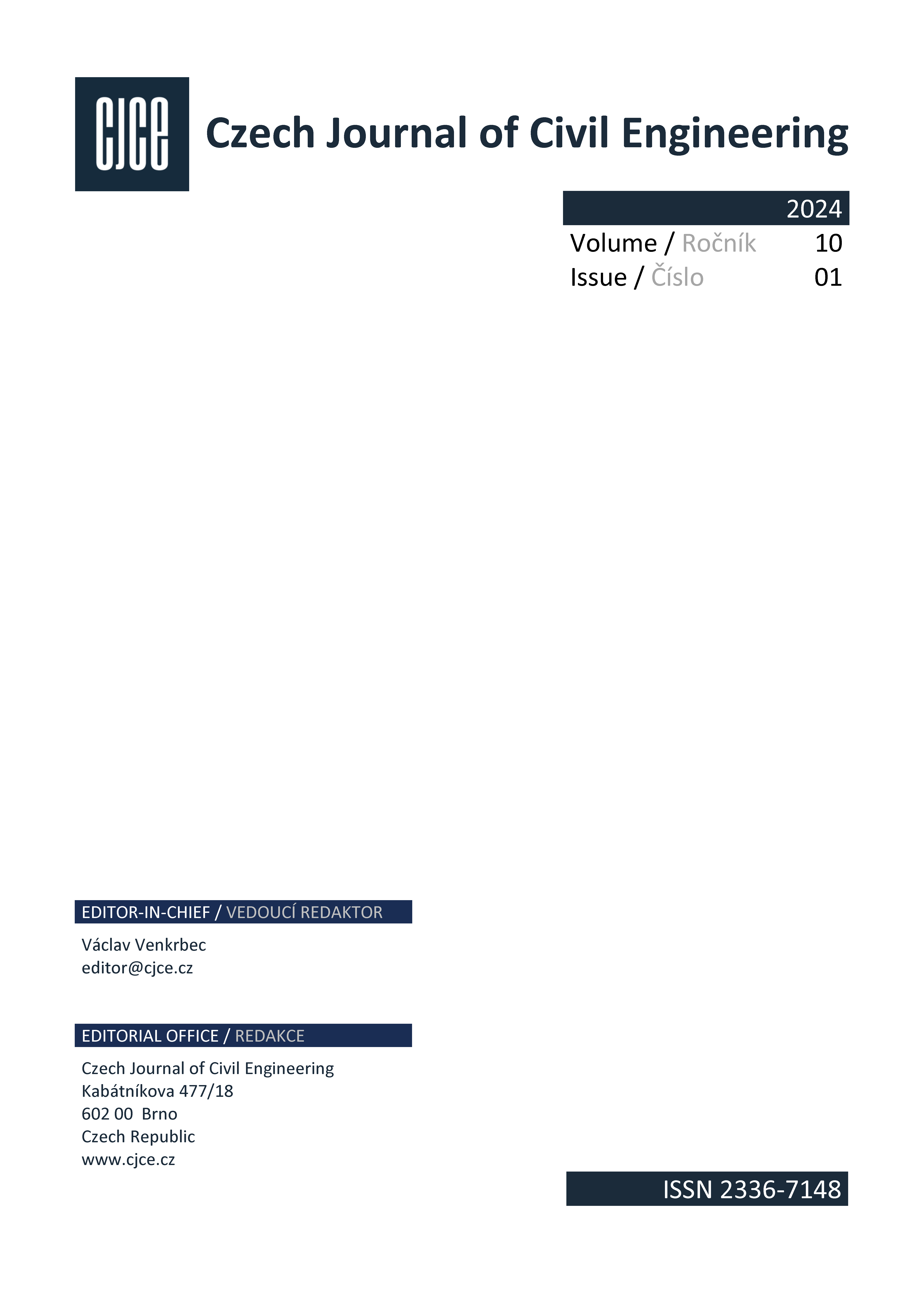Enhancing BIM for more efficient energy performance calculations of buildings
DOI:
https://doi.org/10.51704/cjce.2024.vol10.iss1.pp22-33Klíčová slova:
BIM, BEM, Energetická náročnosť, Energetická efektívnosťAbstrakt
Building Information Modeling (BIM) has the potential to revolutionize energy management by enabling stakeholders to analyze and optimize energy efficiency throughout the entire life cycle of a building—from initial design, through construction, to operation and maintenance (facility management). A BIM model serves as a foundational tool for decision-making processes, encompassing not only geometric data but also non-graphic information about the building's properties, systems, and environment. This rich data set facilitates various simulations and design optimizations, including those related to energy efficiency. For designers, BIM provides a powerful resource that aids in assessing measures by considering the characteristics of construction in relation to the future operation of the building. A significant advancement is the ability to conduct initial evaluations during the early stages of the project cycle, allowing for better-informed decisions and more effective planning right from the outset.
Overall, the integration of BIM into energy management processes underscores its critical role in promoting sustainability and operational efficiency in building projects.
##plugins.generic.paperbuzz.metrics##
Reference
Directive - 2012/27 - EN - EUR-Lex. [Online]. Available at: https://eur-lex.europa.eu/eli/dir/2012/27/oj/eng [Cited: 2024-12-20]
Energy Performance of Buildings Directive. [Online]. Available at: https://energy.ec.europa.eu/topics/energy-efficiency/energy-efficient-buildings/energy-performance-buildings-directive_en [Cited: 2024-12-20]
Renovation wave. [Online]. Available at: https://energy.ec.europa.eu/topics/energy-efficiency/energy-efficient-buildings/renovation-wave_en [Cited: 2024-12-20]
FUNTÍK, T.; PASIAR, M.; ERDÉLYI, J.; HLAVATÁ, J.; KALEJA, P. & P. MAYER. (2018). Building Information Modeling. Bratislava, Slovakia: Vydavateľstvo Eurostav. [Online]. Available at: https://kis.cvt.stuba.sk/arl-stu/sk/detail-stu_us_cat-0069530-Building-Information-Modeling/ [Cited: 2024-01-11]
MAGLAD Ahmed M.; HOUDA Moustafa; ALROWAIS Raid; KHAN Abdul Mateen; JAMEEL Mohammed; REHMAN Sardar Kashif Ur; KHAN Hamhza; JAVED Muhammad Faisal; REHMAN Muhammad Faisal. (2023). Bim-based energy analysis and optimization using insight 360 (case study], Case Studies in Construction Materials, vol. 18. doi: h ttps://doi.org/10.1016/j.cscm.2022.e01755
ANG, Y. Q.; BERZOLLA Z. M. & REINHART C. F. (2020). From concept to application: A review of use cases in urban building energy modeling, Applied Energy, roč. 279, s. 115738. doi: https://doi.org/10.1016/j.apenergy.2020.115738
ALHAMMAD, M.; EAMES, M. & VINAI, A. R. (2024). Enhancing Building Energy Efficiency through Building Information Modeling (BIM) and Building Energy Modeling (BEM) Integration: A Systematic Review. Buildings, Vol. 14, Iss. 3, Art. No. 3. doi: https://doi.org/10.3390/buildings14030581
FUNTÍK, T.; MAKÝŠ, P.; ĎUBEK, M.; ERDÉLYI, J.; HONTI, R. & CEROVŠEK, A T. (2023). The Status of Building Information Modeling Adoption in Slovakia. Buildings, Vol.. 13, Iss. 12, 2023, doi: https://doi.org/10.3390/buildings13122997
STOJANOVSKA-GEORGIEVSKA, L. et al. (2022). BIM in the Center of Digital Transformation of the Construction Sector—The Status of BIM Adoption in North Macedonia. Buildings, Vol. 12, Iss. 2, Art. No. 2. doi: https://doi.org/10.3390/buildings12020218
TRUONG, N.-S.; LUONG, D. L.; NGUYEN, A. Q. T. (2023). BIM to BEM Transition for Optimizing Envelope Design Selection to Enhance Building Energy Efficiency and Cost-Effectiveness. Energies, Vol. 16, Iss. 10. doi: https://doi.org/10.3390/en16103976
EN ISO 19650-1 Organization and digitization of information about buildings and civil engineering works, including building information modelling (BIM). Information management using building information modelling. Part 1: Concepts and principles.
Industry Foundation Classes (IFC) - buildingSMART International. (2024). [Online]. Available at: https://www.buildingsmart.org/standards/bsi-standards/industry-foundation-classes/ [Cited: 2024-01-10]
GOURLIS, G. & IKOVACIC, I. (2017). Building Information Modelling for analysis of energy efficient industrial buildings – A case study. Renewable and Sustainable Energy Reviews, Vol. 68, pp. 953–963. doi: https://doi.org/10.1016/j.rser.2016.02.009
GAO, H.; KOCH, C.; WU, A Y. (2019). Building information modelling based building energy modelling: A review. Applied Energy, Vol. 238, pp.320–343. doi: https://doi.org/10.1016/j.apenergy.2019.01.032
BORRMANN, A.; KÖNIG, M.; KOCH, C.; BEETZ, A. J. (2018). Building Information Modeling: Technology Foundations and Industry Practice. Cham: Springer International Publishing. doi: https://doi.org/10.1007/978-3-319-92862-3
CICCOZZI, A., DE RUBEIS, T., PAOLETTI, D., & AMBROSINI, D. (2023). BIM to BEM for Building Energy Analysis: A Review of Interoperability Strategies. Energies. 16(23), 7845. https://doi.org/10.3390/en16237845
GUÍZAR DENA, A. J.; GARCÍA HÍPOLA, M. D. C.; FERNÁNDEZ BANDERA, A C. (2024). Optimization testing for the modeling and characterization of three-dimensional elements to enhance interoperability from building information modeling (BIM) to building energy modeling (BEM), Energy and Buildings. Vol. 317. doi: https://doi.org/10.1016/j.enbuild.2024.114394
IfcSpace. (2024). [Online]. Available at: https://standards.buildingsmart.org/IFC/RELEASE/IFC2x3/TC1/HTML/ifcproductextension/lexical/ifcspace.htm [Cited: 2024-12-20]
Stahování
Publikováno
Jak citovat
Číslo
Sekce
Licence
Copyright (c) 2025 Tomáš Funtík, Ján Erdélyi, Richard Honti

Tato práce je licencována pod Mezinárodní licencí Creative Commons Attribution-NonCommercial-NoDerivatives 4.0.
Creative Commons Attribution-NonCommercial-NoDerivatives 4.0 International Public License
Články publikované v časopise Czech Journal of Civil Engineering podléhají licenci Creative Commons License. Není-li uvedeno jinak, jednotlivé články v časopise Czech Journal of Civil Engineering podléhají licenci typu Creative Commons Uveďte původ-Neužívejte komerčně-Nezpracovávejte 4.0 Mezinárodní Veřejná licence.









